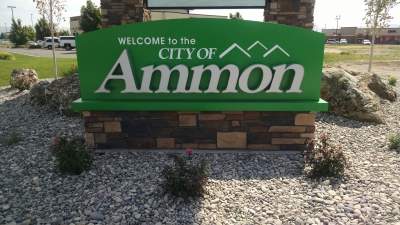Innovative Fiber Financing Through a ‘Broadband Improvement District’ in Ammon, Idaho
DALLAS, May 1, 2017 – One of the biggest puzzles in broadband today is a financial conundrum: Our nation needs next-generation networks everywhere, but advanced internet capacity is spotty at best. One solution to the problem of financing universal broadband networks — on display in Ammon, Idaho — w

DALLAS, May 1, 2017 – One of the biggest puzzles in broadband today is a financial conundrum: Our nation needs next-generation networks everywhere, but advanced internet capacity is spotty at best.
One solution to the problem of financing universal broadband networks — on display in Ammon, Idaho — will be presented at the Rural Telecommunications Congress sessions at the Broadband Communities Summit, in two sessions on Wednesday, May 3, from 4 p.m. to 5 p.m.; and on Thursday, May 4, from 9 a.m. to 10 a.m.
REGISTER TODAY to attend the RTC sessions by using the Rural Telecommunications Code discount code of RTC350.
Consider the traditional approaches to large-scale broadband financing, most of which were built around particular widely-used applications. Telephone companies grew their copper infrastructure off of ratepayer-financed instruments. Cable companies’ financial structures were defined by the industry’s model to monetize its vertically integrated video content through co-axial wires optimized for television content.
So will these “telco” and “cable” models drive investment in fiber broadband and 5G wireless?
The answer to that question is “no,” according to the example of Ammon, Idaho, a 14,685-population city neighboring Idaho Falls.
Ammon’s approach to financing its fiber-to-the-home network is worth examining in greater detail precisely because it combines three unique elements from which other communities can benefit:
- It disaggregates the costs of infrastructure, utility, and access that are associated with an FTTH build.
- It provides a cutting-edge example of why separating Infrastructure and services (also known as “open access”) is fundamental to spurring applications of the future.
- It offers hope for small and rural communities that: Yes, you can get gigabit fiber without having to wait until the 22nd Century.
In the session on financing FTTH on 4 p.m. on Wednesday, May 3, Michael Curri of the Strategic Networks Group will lead a discussion on the “essential services approach” being undertaken by Ammon, and also by LS Networks. The City of Ammon’s open access network is built upon an opt-in, or purely voluntary approach featuring a “Broadband Improvement District.”
“Municipal networks that have the benefit of leveraging a utility (electric, gas, etc.) have shown the ability to build and launch community service at a successful level in terms of take-rates, financing, and operations. But what happens when you community doesn’t have that head start,” reads the session description.
“This session will examine a new way to fund the last mile by combining Broadband Improvement Districts, cost reduction financing and local economic growth in a sustainable, low-risk approach,” it continues.
In the panel that begins at 9 a.m. on Thursday, May 4, Joel Mulder of ex2 Technology will consider “ownership models for rural broadband.” This session will feature Bruce Patterson, Ammon’s technology director, Leo Carlson, business and technology manager for internet provider Norvado, and Rick Smith, director of general services for the City of Cortez, Colorado.
“In metropolitan areas, broadband providers are usually vertically integrated – the same company builds, owns and manages the infrastructure and also delivers services,” reads that session description.
“Rural network owners have been more willing to experiment with different ownership and funding models. In this session, we’ll hear from multiple network owners that have achieved success in rural areas.”
Says Mulder, the moderator of the Thursday session, and a member of the RTC board, “These are the guys that have built or are building” advanced networks for their communities. “They will discuss ownership, pitfalls and roadblocks for constructing such networks.”
Adds Curri, who is also a member of the RTC board: “I am focusing on how these networks pay for themselves, and how — when the property owners are financing this — the last-mile gets done in a low-risk, sustainable way.”
REGISTER TODAY to attend the RTC sessions by using the Rural Telecommunications Code discount code of RTC350. This registration code entitles you to the lowest possible rate to attend not only the RTC sessions, but the entire Broadband Communities Summit program. The $350 costs is about one-third of the standard ticket price.










Member discussion